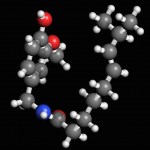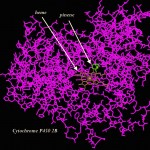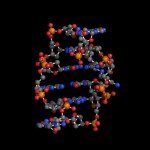To have an effect, a molecule must bind to a receptor and trigger a signal. Studying a receptor's structure can give us insights about the way this triggering process works.
Capsaicin is a fascinating molecule that puts the "pep" into peppers. Curiously, the amount of capsaicin in a pepper is measured with a test devised in 1912 by Wilbur Scoville. Dried peppers are dissolved in alcohol, this liquid extract is diluted in water, and trained people determine the pepper's Scoville value by "tasting" the heat.
I wonder how these people are recruited.…
PDB
On pinene and inhibiting enzymes.
People of a certain age may remember a series of really funny commercials featuring Euell Gibbons and his famous question about whether you've ever eaten a pine tree. "Some parts are edible" said Euell.
Perhaps some parts are, but other pine tree products aren't so nourishing. Crystallography365, aka @Crystal_in_city had a couple of fun blog posts about pinene, a chemical made by pine trees, that also inhibits cytochrome P450 2B6.
I was inspired by their posts and by my experience with Cytochrome P450 to go a little…
Sucrose
Molecules of sucrose tore apart in their bellies letting glucose course free in their veins.
Luckily for us, a system evolved long ago to capture that glucose and minimize it's potential for damage. Removing sugar from the blood and sequestering it in liver, fat, and muscle cells, minimizes the harm that might result if sugars were free to bind to proteins and our bodies were stressed by trying to flush excess glucose out of our system.
This holiday season, we give thanks for insulin and the biotech companies like Genentech that cloned the human gene and began to…
Today (4/25) is national DNA day. Digital World Biology™ is celebrating by sharing some of our favorite structures of DNA. We created these photos with Molecule World™ a new iPad app for viewing molecular structures.
As we are taught in school, the double stranded DNA molecule is a right-handed helix as determined by Watson and Crick using Franklin's x-ray diffraction images [1]. This B-form of DNA has approximately 10 nucleotides per turn of the helix and is the most common form of DNA found in nature.
Classic structure with the elements colored.
Classic structure…



